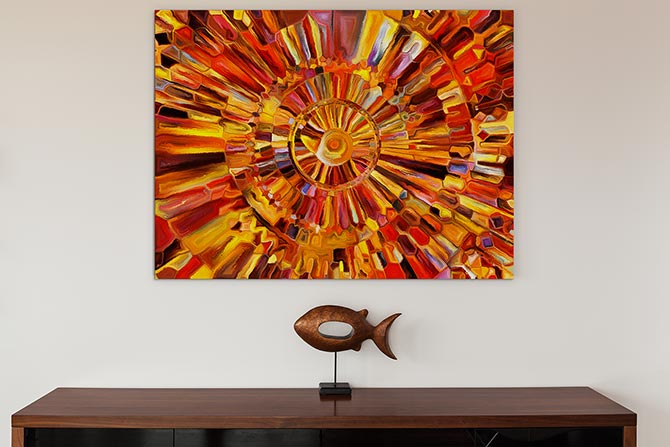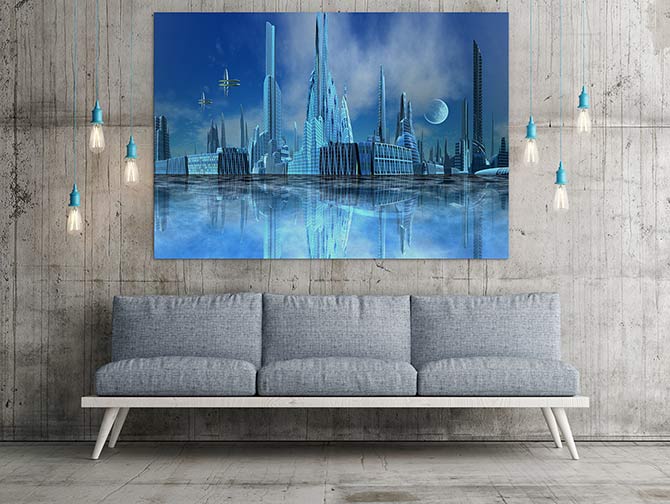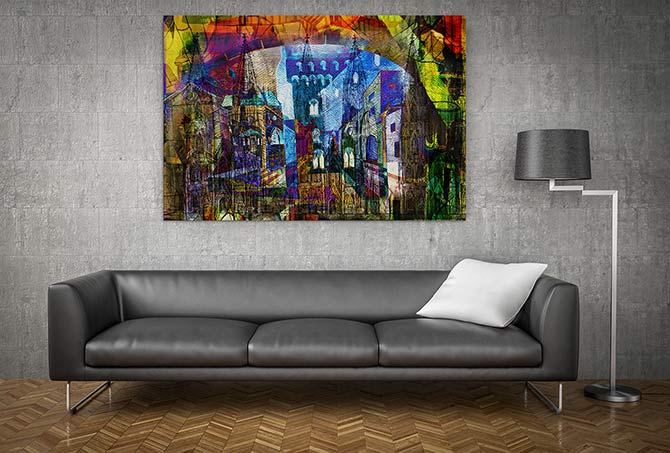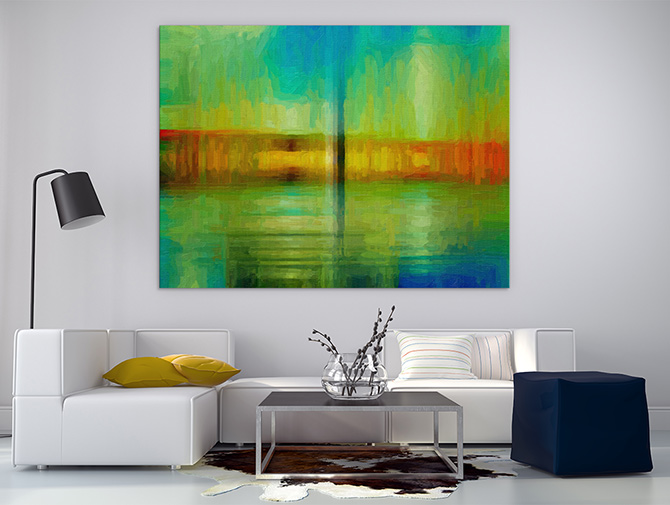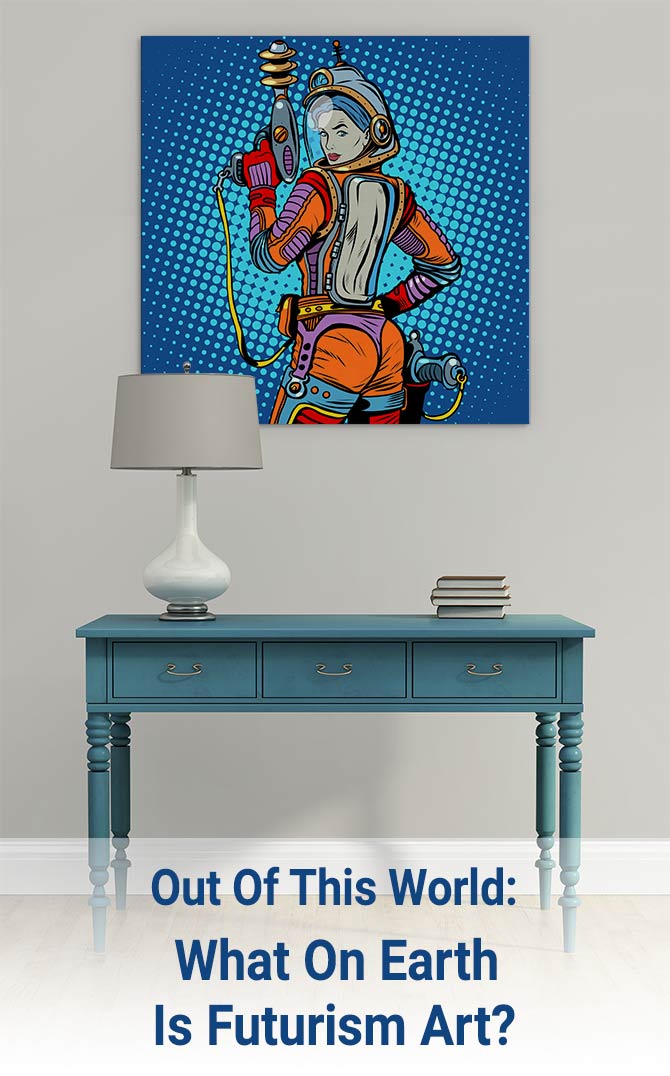
If Futurism art was first announced over 100 years ago in 1909 and if Futurism is about celebrating innovation, originality and change in society and culture, does that mean we’re now living in the age the movement originally set out to embrace?
And if we are, does that mean the style has stagnated? Or is Futurism a living, breathing, active movement that continues to evolve, away from its violent history, making way for new futures?
Futurism is a style that’s not often placed in the limelight, but despite its controversial roots, it has most definitely left its mark and inspired many artists to adopt one of more facets of the form.
Join us as we take a look at what on earth Futurism is how it’s now become something that’s truly out of this world.
Futurism Inspired Paintings
Futurism, the word for this 20th Century Italian avant-garde movement, was coined by Filippo Marinetti. Unlike other art movements, it was ‘self invented’ (Futurism, Art Movements) and a ‘fanfare of publicity’ followed.
Ignoring most of Marinetti’s bombastic manifesto of Futurism (‘set fire to the library shelves… flood the museums’), Futurist artists embraced the movement across a variety of mediums – painting, sculpture, architecture, music, film fashion, interior design, graphic design.
These artists highlighted contemporary social issues, focusing on themes that captured modernity or ‘the future’, ideas around the speed of technology, movement of cars and aeroplanes and the industrial revolution.
Futurism painter and manifesto signatory Giacomo Balla even named his daughter ‘Propeller’ such was the passion for the movement.
Colour and optical experiments were strong in Futurism paintings as was Cubism, a movement that sprung up simultaneously.
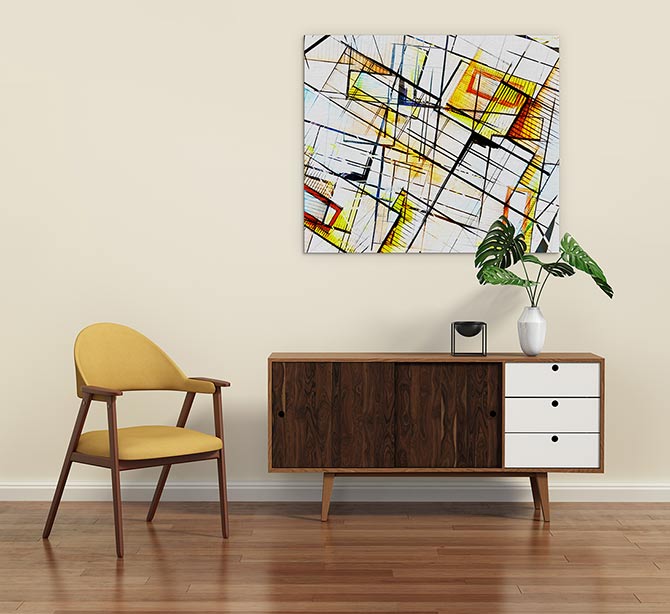
INDUSTRIAL DESIGN: This ‘Composition’ print is out of this world, definitely not something from yesteryear.
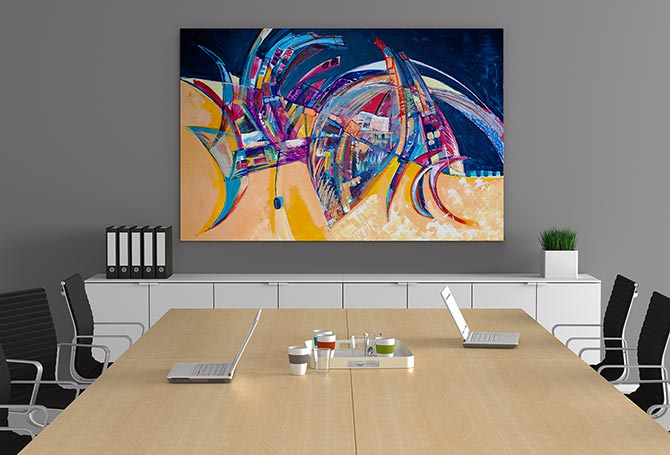
MOVEMENT: ‘Evolving City’ is urban in high speed, a wonderful talking point piece of art for an office or dining area.
Beauty Of Modern Life
Futurism artists attempted to present works that went beyond the visual sense and captured the noise, heat and smell of urban scapes.
They felt machines, speed, violence and change could be depicted in a beautiful way with the construction of the modern city acting as muse – sensations, rhythms and movements.
According to Khan Academy, Futurism was one of the most politicised art movements of the 20th Century, with Futurists holding ‘what they called serate futuriste, or Futurist evenings, where they would recite poems and display art, while also shouting politically charged rhetoric at the audience in the hope of inciting riot’.
Their goal was to break down the status quo and energise Italy. Sadly this ‘second generation’ of Futurism artists linked themselves to Mussolini and, in turn, Fascism, making this ‘historically significant artform’ a highly complicated one to study (Italian Futurism: An Introduction, Khan Academy).
It is understood that ‘some leftists that came to Futurism in the earlier years continued to oppose Marinetti’s domination of the artistic and political direction of Futurism’ (Art In The Picture).
Perhaps that’s an argument for those inspired by the Futurism movement to not stop at the violence and to never cease the quest for change in a contemporary society.

CHARGED: The exciting, fast pace of technology is depicted in ‘Speed Of Life’ with city life at its core.

HOT STUFF: Feel the heat permeate from ‘Rage Against The Machine’, a piece in which Futurism meets Cubism.
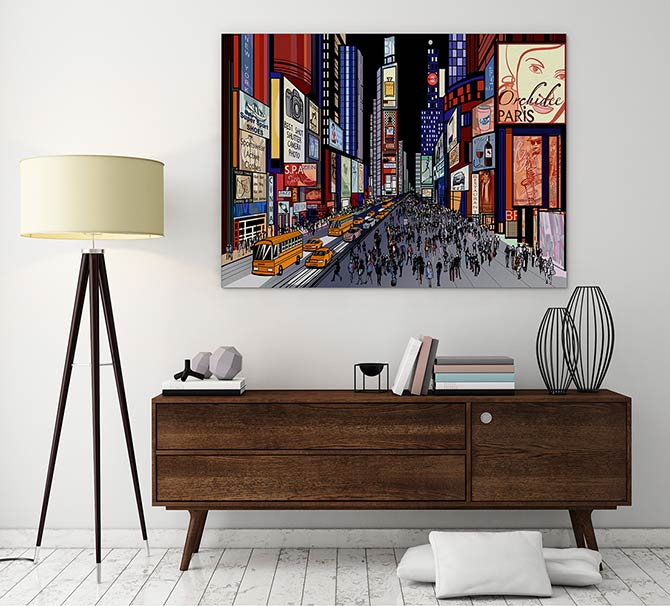
RHYTHM NATION: The excitement of urban society pulsates in this ‘New York City Night Life’ piece, a perfect way to bring energy into a room.

CELEBRATION OF CHANGE: This Futurist inspired ‘Red Bus’ print is almost abstract in its form, with change happening all around it.
Movement Of People
The mechanics of animal and human movement fascinated some Futurists, some of which was depicted in time-lapse photography. As well as movement, practices like colour, line and shape are extremely important.
Even though Futurism ceased as a global art force in 1915 and lingered in Italy until the 1930s (Visual Arts Cork), its ideology influenced – and continues to influence – all types of art.
Its influence across Europe included ‘the “machine aesthetic” of French artist Fernand Leger, Vorticists in Britain, the Dada movement in Zurich and Berlin, Art Deco, American Precisionism and Surrealism’ (Visual Arts Cork).
If you love the sound of opening your mind to the future, you’ll also enjoy this blog piece on different types of art, including science fiction and fantasy art.

MACHINE GIRL: Futurists embraced the age of the machine and this pop art ‘Ready To Zap’ piece is a funky interpretation of that.

SHAPELY: Bring a dining room alive with ‘The Restaurant In Paris’, an urban piece that’s full of colour and excitement.

OFFBEAT: This ‘Shared Loneliness’ is a step away from the upbeat buzz of typical Futurism, but the force of the style lies in its gorgeous composition.
Change Of Place
Art Movements, which states that Futurism spanned from 1904-1944, describes the movement’s aim was to ‘portray sensations as a “synthesis of what one remembers and of what one sees”, and to capture what they called the “force lines” of objects’.
To be a Futurist was to be modern, young and revolutionary. Italian and Russian Futurists wanted their nations to stop looking at the past and instead discover a new national identity by looking to the future. Urban places were a subject of intense fascination. What could the future look like?
A study of Futurism today involves reassessing this contentious movement, both objectively and subjectively, discarding the dangerous, outdated politics and welcoming a new interpretation of the new works it has either inspired or sat alongside – urban art, sci-fi art and cubism.

FASCINATING: There is so much in this ‘Urban Regeneration’ that’s quintessentially Futurism – out with the old, in with the new.
Futurism For Kids?
Talking about future possibilities is always exciting for children whose imaginations are unconstrained by impossibilities.
Futurists conveyed in their art the energy, excitement and thrill of a technological society.
Kids Search purports that ‘the ideals of futurism remain as part of modern Western culture: the emphasis on youth, speed, power and technology is expressed in much of modern cinema and culture’.
Today, Futurism inspired art is very much at home in a child’s room.

